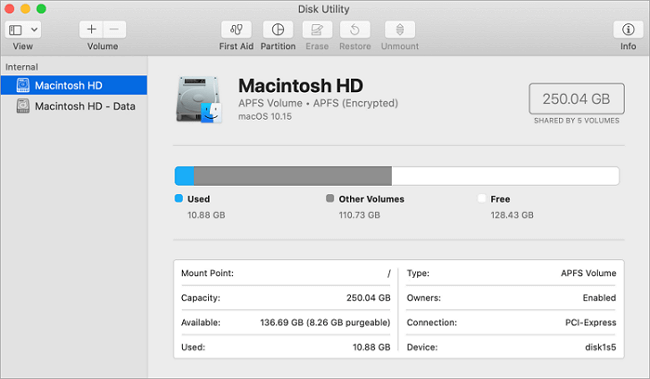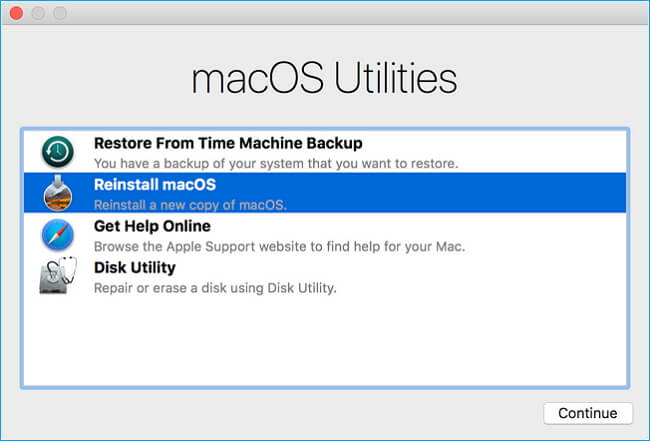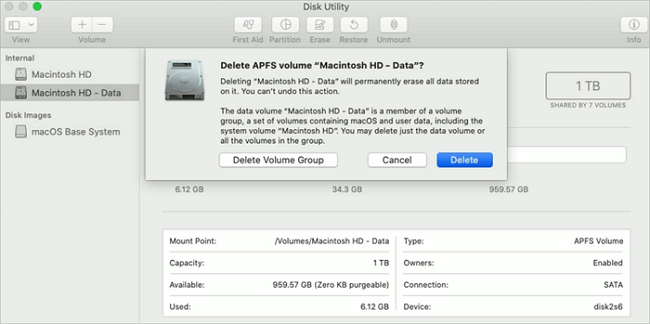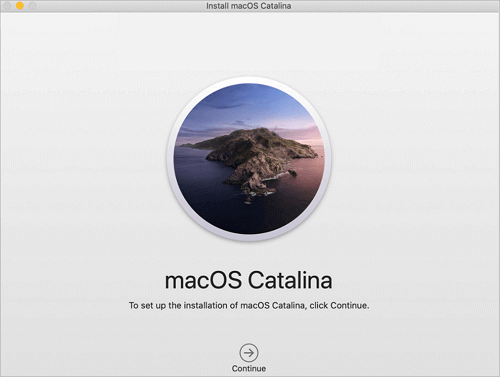How to Recover Data from Macintosh HD Data
Mac's hard drive, also know as Macintosh HD, is the primary storage facility or database for keeping system and data for Mac users. And macOS or Mac OS X has been committed to providing the best protection of Mac hard drive to avoid data loss for many years. However, sometimes, your Macintosh HD will fail to boot because of a particular reason and needs reinstalling macOS. In this article, you will first learn how to use macOS Recovery to perform Macintosh HD download on your built-in drive or an external drive. Then, you'll see how to use Deep Data Recovery for Mac, professional Macintosh HD data recovery software to recover data from Macintosh HD - Data.
What Is the Difference Between Macintosh HD and Macintosh HD - Data
Many users are not clear about the difference between Macintosh HD and Macintosh HD - Data, let's briefly talk about them here. Before performing a Macintosh HD download and data recovery, it is necessary for you to take a look.
For most Mac computers, whether it is an iMac or MacBook, the default configuration is only one disk, that is, Macintosh HD. The Macintosh HD is where the system and system support files are kept, and the user has no access to them. The Mac HD - Data is where your files and apps are kept, and you have access to them just like the older system volumes. Both Macintosh HD and Macintosh HD Data are in the same disk.

How to Perform Macintosh HD Download from macOS Recovery
macOS Recovery is part of the built-in recovery system of Mac. You can start up from macOS Recovery and use it to restore from Time Machine, reinstall macOS, get help online, repair or erase a hard disk from certain software issues or take other actions on your Mac. Now, follow the guides below to download Macintosh HD on your Mac.
Step 1. Startup Mac from macOS Recovery
Turn on your Mac and immediately press and hold one of the combinations on your keyboard: Command (⌘)-R, Option-⌘-R, Shift-Option-⌘-R. If you need to enter a password, do as required.
When you see the utility window as shown below, you have started up from macOS Recovery.

Step 2. Decide whether to erase (format) your disk
If you are going to selling, trading in, or giving away your Mac, or you have an issue that requires you to erase, you can choose to erase your computer. Click "Disk Utility" > "Continue", and follow the onscreen instructions to finish.
As erasing disk will delete the data completely with no chance to recover, thinks twice before your take action.

Step 3. Install macOS
You can skip step 2 and select "Reinstall macOS" to start reinstalling macOS directly. Follow the instructions on the screen to proceed.
- If the installer doesn't see your disk, or it says that it can't install on your computer or volume, you might need to erase your disk first.
- Don't put your Mac to sleep or closing its lid until the installation completes.
- The specific device model determines whether you can install the latest macOS. If you can't install macOS Catalina, you might be able to install an earlier macOS, such as macOS Mojave, High Sierra, Sierra, El Capitan, or Yosemite.

You can also finish Macintosh HD download from the App Store or Software Update preferences. Or you can create a bootable installer disk, then use that disk to install macOS on your Mac or another Mac.
Tip: If you have any questions about "Does Recovery Mode delete everything on Mac?", read the article for answers.
Macintosh HD Recovery - Recover Lost Data from Macintosh HD
Although you can use the macOS Recovery to reinstall macOS or Mac OS X without missing user data, you may still find it seems unavoidable to losing important photos, documents, emails, or videos on Macintosh HD if you have used the Disk Utility in HD Recovery to format your disk. Then, how could such an issue be settled? How to recover the lost files from Mac? Now, all these problems could be solved directly by using a professional Macintosh HD data recovery software - Deep Data Recovery for Mac.
Deep Data Recovery for Mac is an easy-to-use and reliable data recovery software for Mac users. It can recover 200+ types of data from your Mac internal hard drive as well as other external media storage devices. It works with many versions of Mac from Mac OS X 10.9 to the latest macOS 10.15.
- Full file system support: support Mac data recovery from NTFS, HFS, HFS+, HFSX, HFS Wrapper, FAT file system volumes, as well as APFS data recovery.
- Convenient data recovery preview: the preview of scanned photos, audios, and videos to specify what you want to recover effectively.
- Multiple Mac data recovery types: recover all the usual file types, including documents, images, files, videos, and other files from your Mac internal/external hard drive.
- Powerful data recovery capability: recover data from the emptied trash bin, formatted hard drive/USB/memory card, lost partitions, etc..
Only three steps will solve the data loss troubles for Macintosh HD Recovery.
Step 1. Launch Deep Data Recovery. Choose file types and click "Next" to start.

Step 2. Select the disk location (it can be an internal HDD/SSD or a removable storage device) where you lost data and files. Click the "Scan" button.

Step 3. Deep Data Recovery for Mac will immediately scan your selected disk volume and display the scanning results on the left pane.

Step 4. In the scan results, select the file(s) and click the "Recover" button to have them back.
Except for recovering lost data caused by Macintosh HD recovery, Qiling Data Recovery Wizard for Mac also works very well to restore lost files on Mac due to the following reasons.
- Empty Trash bin.
- Format hard drive without backup by mistake.
- Lose data after system restore.
- Wrong operations on the existing partitions cause the partition table damaged.
- The hard drive logic is corrupted, and the data is inaccessible.
- The hard drive is inaccessible because of the virus attacks.
Macintosh HD Download FAQs
1. How do I download Macintosh HD?
How to install a fresh copy of OS X on your Mac
Step 1. Shut down your Mac.
Step 2. Press the Power button.
Step 3. Immediately press the command (cloverleaf) key and R together.
Step 4. Make sure you're connected to the internet through Wi-Fi.
Step 5. Select Install Mac OS X, then click Continue.
2. What is Macintosh HD?
In the Finder, both volumes appear as Macintosh HD. The Disk Utility app in macOS Catalina shows that Macintosh HD is the read-only system volume and Macintosh HD - Data contains the rest of your files and data.
3. How do I find Macintosh HD on my Macbook Pro?
Get Macintosh HD In Finder Sidebar
Step 1. On your Mac launch Finder.
Step 2. Click on the Finder option from the menu bar and click on "Preferences".
Step 3. On the Finder Preferences click on the "Sidebar" tab.
Step 4. Under "Show these items in the sidebar" click on the "Hard disks" option.
Related Articles
- Fix 'The disk you inserted was not readable by this computer' on Mac
- Disk Drill Mac: Is It Safe? Or Is It Worth Downloading?
- 10 Steps to Fix "There is No Connected Camera" on Macbook Air/Pro/iMac 2022
- How to Recover Files Deleted by RM on Mac